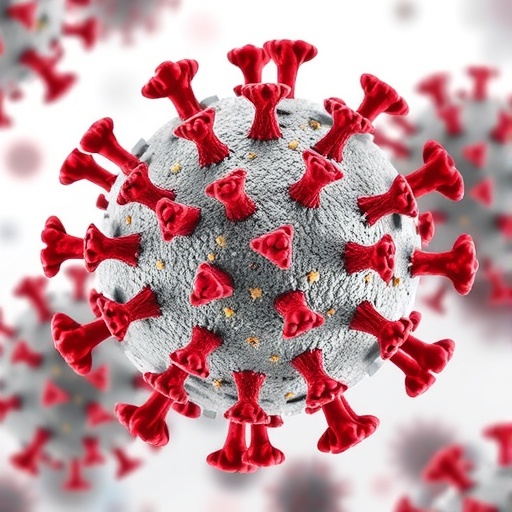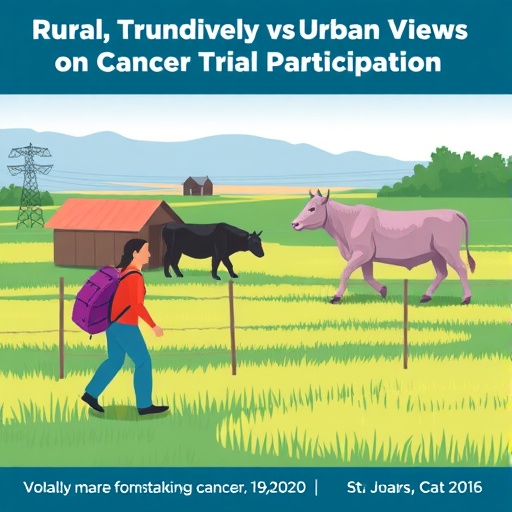The COVID-19 pandemic has irrevocably transformed our understanding of urban resilience and public health preparedness, revealing critical insights into how contemporary cities can better face emerging infectious disease threats in the future. Recent research led by Professor Ayyoob Sharifi of Hiroshima University and Borhan Sepehri of Tarbiat Modares University delves deeply into the complex interface between urban planning and pandemic resilience, producing a comprehensive framework aimed at enhancing cities’ ability to withstand future pandemics such as those posed by viruses like monkeypox (Mpox). Published in the renowned journal Cities on September 8, 2025, this study consolidates rich, evidence-based strategies that extend beyond traditional health interventions to encompass broader urban design and management paradigms.
One of the most compelling aspects of this research is its foundation on a systematic review of COVID-19 related studies assessed through the Methodi Ordinatio ranking system. From an initial collection of 30 rigorously selected papers, the authors distilled 44 pivotal lessons grouped into 24 thematic categories, ultimately articulating 22 targeted strategies to bolster urban resilience. This methodological rigor not only enhances the credibility of their framework but also ensures its adaptability across diverse urban typologies, ranging from dense metropolis cores to low-income and informal settlements. The synthesis highlights that urban resilience is not merely a product of healthcare infrastructure but an intricate interplay of social equity, infrastructural flexibility, technological innovation, and governance.
Traditional infectious disease control measures have experienced a paradigm shift, driven by both the evolution of pathogens and changes in urban dynamics. Modern medicine, with its arsenal of antibiotics and antiviral drugs, has lowered vulnerability to many prior threats; however, microbial adaptation continues to challenge these gains. Bacteria’s propensity for acquiring antibiotic resistance and viruses’ expanding host range underscore the inevitability of future pandemics. Sharifi and Sepehri argue that health resilience in cities must therefore transcend medical countermeasures to incorporate urban planning strategies that limit transmission pathways and reduce vulnerability at multiple social levels.
The COVID-19 pandemic exemplifies how urbanization patterns, socioeconomic disparities, and environmental factors critically impact disease spread and containment. Rapid urban growth, coupled with inadequate housing conditions and infrastructure in slums and informal settlements, has disproportionately burdened vulnerable populations, accentuating health inequities. The study advocates for an emphasis on inclusive urban design that promotes healthier and affordable residential neighborhoods, emphasizing improved living conditions to curtail disease propagation and enhance overall community well-being.
Furthermore, the integration of big data analytics and artificial intelligence into urban management emerges as a cornerstone in the proposed framework. By harnessing real-time data streams, predictive modeling, and smart surveillance systems, cities can dynamically monitor outbreak progression and optimize their response strategies. This approach facilitates rapid decision-making and adaptive interventions, vital in the fluid context of emerging pandemics, where timing and precision markedly influence outcomes.
However, the authors caution against a one-size-fits-all approach to implementing these strategies. Urban environments vary significantly in population density, social composition, infrastructure capability, and governance models, necessitating tailored solutions. For instance, densely populated areas may require different containment and resource allocation methods than sprawling suburban or informal settlements. Recognizing this, the framework underscores adaptability and context-specific customization to mitigate unintended consequences such as exacerbated inequalities or heightened transmission risks.
Another critical dimension highlighted is the importance of multi-functionality and inclusivity in urban planning. Pandemic resilience benefits from infrastructure and services designed to serve multiple purposes, thereby maximizing resource utilization and socio-economic inclusiveness. Ensuring equitable access to healthcare, green spaces, transportation, and digital connectivity ensures that no demographic segment is disproportionately affected during crises, enhancing social cohesion and trust—key elements for effective public health responses.
Sharifi and Sepehri’s framework also stresses the urgency of addressing socioeconomic disparities that undermine resilience. The pandemic has painfully demonstrated how poverty, overcrowded housing, and lack of social safety nets exacerbate vulnerability to infectious diseases. Urban resilience strategies must integrate social policy interventions aimed at reducing these gaps, supporting marginalized communities through targeted health programs, economic assistance, and improved access to essential services.
The implication of climate change—a factor intertwined with urban health—also figures prominently in this discourse. Climate-induced environmental changes influence pathogen ecology and vector proliferation, potentially intensifying the emergence of novel infectious agents. Urban planning measures that promote environmental sustainability and reduce carbon footprints can synergistically lessen pandemic risks by stabilizing ecosystems and human habitats.
This compelling research elucidates a roadmap for cities striving to become pandemic-resilient in a world where emerging health threats are the new norm rather than exceptions. By harmonizing lessons from COVID-19 with advanced technological tools and equitable urban governance, the framework aims to safeguard public health without compromising social and economic vitality. Yet, it calls for further interdisciplinary collaboration to refine strategies ensuring they remain robust against evolving threats.
Ultimately, the vision is clear: cities as adaptive, inclusive, and multifunctional ecosystems that not only endure future pandemics but emerge stronger. Proactive integration of public health imperatives into urban planning, smart utilization of data-driven tools, and unwavering commitment to social equity constitute the pillars of this transformative resilience. Future research and policy formulation inspired by this framework have the potential to fundamentally rewrite how societies prepare for, respond to, and recover from pandemics beyond COVID-19 and Mpox.
As global urbanization continues unabated, the significance of this study cannot be overstated. It challenges urban scholars, policymakers, and public health officials to rethink existing paradigms and collectively forge strategies attuned to the complexities of 21st-century disease dynamics. The promise of healthier and more resilient cities is within reach, contingent on our ability to translate these incisive research insights into actionable urban interventions.
Subject of Research: Not applicable
Article Title: Lessons from COVID-19 for enhanced urban resilience against Mpox and future pandemics
News Publication Date: 8-Sep-2025
Web References:
DOI: 10.1016/j.cities.2025.106446
Image Credits: News organizations may use or redistribute the accompanying image with proper attribution as part of news coverage of this paper only.
Keywords: Urban resilience, COVID-19, pandemic preparedness, Mpox, urban planning, smart city technologies, public health, socioeconomic equity, infectious disease control, big data analytics, artificial intelligence, sustainable urban design
Tags: adapting urban typologiescomprehensive pandemic resilienceCOVID-19 pandemic preparednessenhancing city management for healthevidence-based urban designinfectious disease managementMethodi Ordinatio ranking systemmonkeypox preparednesspandemic response frameworkpublic health insightsurban planning and healthurban resilience strategies





